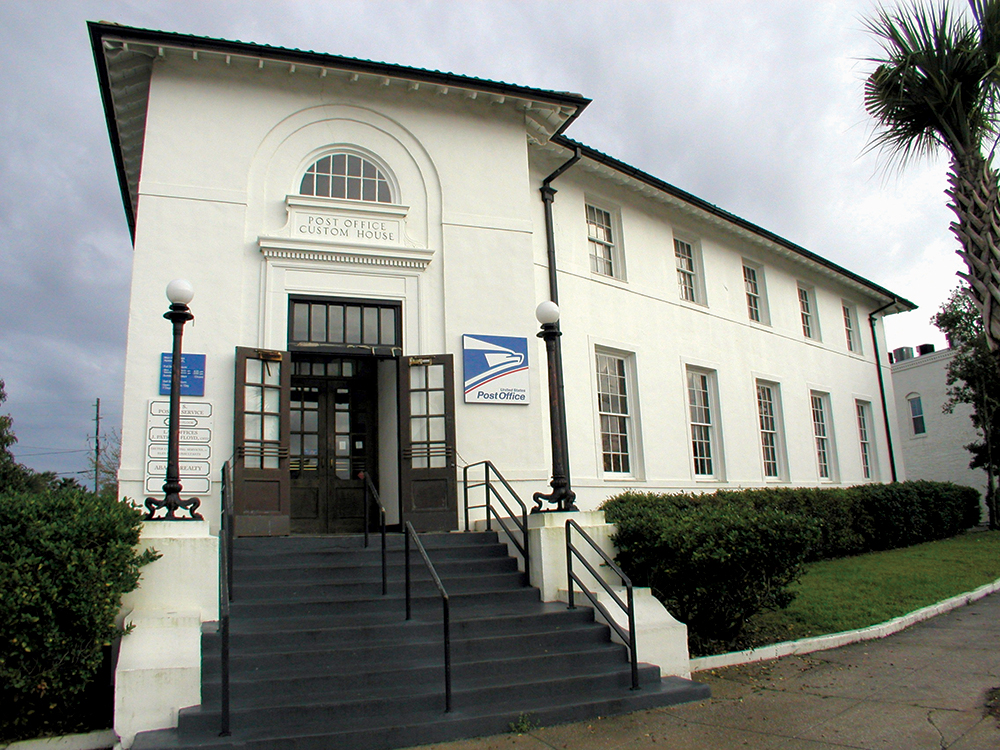
app_boat_hero
Apalachicola
Days gone by are within reach
Written by Katherine Han | Photography by Gerald Burwell
In a time when change happens at the blink of an eye, where high-rise condominiums and master planned communities sprout like dandelion weeds in an open field, a small town nestled in the Florida panhandle holds true to its rich history and heritage even as it is heralded as one of the most sought after destinations in the country.
With roots dating back to the early 1800’s, Apalachicola was established as a port for cotton trade between New England and Europe. Shipping cotton was the small town’s first major industry and soon the town became the third busiest port in the Gulf of Mexico. Remnants of life during these bustling riverport days can still be seen today through the town’s 900 buildings registered with the National Register Historic District. Today, walking tours offer a glimpse into old cotton warehouses and majestic Victorian homes, as well as museums and parks that capture life as it was along the riverfront. With its large cypress forests, timber was the town’s next biggest industry in the late 1800’s with several large cypress lumber mills making their home in the tiny, coastal town.
Today, 90% of Florida’s oysters are harvested in Franklin County alone and 13% of Apalachicola Bay oysters are consumed throughout the country.
By the end of the 19th century, a bountiful gem was discovered in the waters along Apalachicola, transforming the sleepy fishing village into a major supplier of fresh seafood throughout the state and country. Its rich maritime heritage found in its natural resources of fresh seafood has made Apalachicola oysters its leading industry. Today, 90% of Florida’s oysters are harvested in Franklin County alone and 13% of Apalachicola Bay oysters are consumed throughout the country. Renowned for its mellow flavor and balanced saltiness, Apalachicola oysters are heralded by chefs all over the world. Low in calories and cholesterol, Apalachicola oysters have graced the menus of some of the best gourmet restaurants in the world, as well as numerous cookbooks and recipes across the globe. The Apalachicola Bay creates a perfect environment for oysters with its warm shallow water fed by the salt water of the Apalachicola River. People flock from all over to savor these succulent culinary delights, as well as Apalachicola’s bounty of other fresh seafood including shrimp, fish and blue crabs. Over the years, at least a dozen acclaimed restaurants with well-renowned chefs from New England and other parts of country have made Apalachicola their home, offering delectable menus using the area’s fresh and locally harvested seafood.
Although tourism has become an integral part of Apalachicola’s economy, the town’s allure to those far and near still lies within its authenticity and its strong sense of place. The fact that Apalachicola has successfully retained much of its original flavor has earned the town a recent recognition by the National Trust for Historic Preservation. In February of 2008, Apalachicola was named as one of the “2008 Dozen Distinctive Destinations”, joining other select communities across the United States including Portsmouth, New Hampshire; Portland, Oregon; and Red Wing, Minnesota to name a few. Apalachicola was selected due to its success in maintaining its integrity as a small, working town that exhibits exceptional charm and character. With a vibrant downtown lined with eclectic boutiques, quaint bed and breakfast inns and world-renowned restaurants, the streets are still filled with historic buildings and homes along a waterfront with tiny, fishing vessels coming in after a long day of work.
In February of 2008, Apalachicola was named as one of the “2008 Dozen Distinctive Destinations”, joining other select communities across the United States including Portsmouth, New Hampshire; Portland, Oregon; and Red Wing, Minnesota to name a few.
“Both locals and visitors appreciate Apalachicola for what it is – a beautiful, small town that has maintained its architectural and cultural integrity,” said Anita Grove, executive director of the Apalachicola Bay Chamber of Commerce. “We have kept the flavor of this small town by preserving the heritage of this special place and we view change as an addition, rather than a distraction to what’s already there. With a strict building restriction of three stories in height throughout Franklin County, Apalachicola will never see the high-rise condominiums that have sprouted along the Panhandle as it embraces low-density development.
A pristine natural environment, Apalachicola is buffered by overdevelopment with over 87% of Franklin County in state or national forests or preserves. This lends to the area’s unspoiled beauty indicative of “what Florida used to be like.” With its national and state forests along with protected shallow bays and endless beaches, Apalachicola offers a peaceful retreat for those who appreciate nature. From canoeing, kayaking, fishing, boating, hiking and biking, visitors can learn how Apalachicola’s waterfront has played an important role in the region’s history and economy through guided tours or on their own. For wildlife enthusiasts, Apalachicola National Estuarine Research Reserve provides a hands-on exploration into migratory birds, sea turtles and other estuarine life.
“Apalachicola has been here for 200 years, so it’s a town with a lot of history and interesting people with their own stories,” Grove noted. “And, although change happens, we’re not changing that quickly.”
— V —
Share This Story!
KEEP UP WITH THE LATEST STORIES FROM VIE





















































































































































